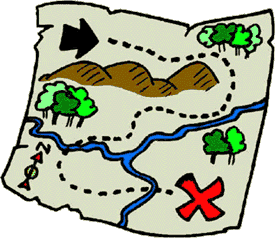In TOK class, our class was thrown questions that really sounded simple but not simple. It went:
How do I know _____ ?
Can we know for certain?
Thrown back by the question, I was totally lost; However, Mr. Aaron soon taught us the 'Ways of Knowing': Reason, Emotion, language, Imagination, Perception, Faith, Memory, Intuition
Out of these ways, I found 'Faith' the most significant because without faith, the other 7 ways seemed useless. For example, in order to trust our memories, we need to believe in ourselves that our memories are right although they are not virtually reliable.
More than this, we learned about 'The Cosmic Calendar' which condensed the period from the beginning of this universe until today and expressed in a calendar. It looks somethings like this:
Perhaps, the first impression when I first saw this calendar was full of misapprehension. Because the calendar comprised too many things, it was hard to interpret. However, it got even worse when I understood the calendar.
First of all, the credibility of this calendar was the first to be doubted. How did the creator, Carl Sagon, create this Calendar? Through what sources and information? Moreover, 'Why' did he create this calendar? For what purpose?
Secondly, if this calendar were to be accurate, it just proved to me that I am just a speck that has existed just for the last nano-milliseconds.
Another glimpse It had brought to me was that It allowed me to answer the controversy of whether the creation theory or the evolution theory is more explainable. Despite my bias of supporting the creation theory, I had to admit that the Cosmic Calendar explicitly showed that evolution was what led human these days to be as how we are now. However, assuming that this Calendar is absolutely correct, I want to ask the readers of this post to answer my question: How did the big band theory happen? If this question is too hard, Did the big bang just happen as a coincidence?
Along with a calendar, we explored the world of Maps and how it is linked with TOK
The first Map we were given was 'The Mercator Projection' which was made in 1956
 http://www.math.ubc.ca/~israel/m103/mercator/mercator.html
http://www.math.ubc.ca/~israel/m103/mercator/mercator.html
With the Map, we had to find out what were biased in this map. Here are things I found biased
-The fact that Europe is situated in the center of the Map, which implies the superiority Europeans had in that time of era
-Why is the size of Antarctica massive? I think this is because at that time, Europeans had not had enough technology to sail to Antarctica but they had seen the slight silhouette or heard of Antarctica and had decided to assume the size of Antarctica. This shows the inaccuracy of the map
-There are some islands missing which also implies the imprecision of the map
Along with these points, Mr. Aaron pointed out what utterly showed the ultimate flaw of the map/
It was the size of Africa compared to any other continents. I learned that, in reality, the size of Africa is as big as many countries combined. For more information see the next image:
Isn't it shocking? It is almost 10 most gigantic countries all combined in one and there is still space left in between.
Not only this map but other maps were given as examples and we were told to identify problems for everyone of them. Therefore, through this activity, we learned there is no such thing as a perfect map.
If there were to be a perfect map, it would have to scale up to the size of this Earth. Also, Instead of it's flat rectangular diagram, the diagram should be 3 dimensional. So, what is this asking for? That's right an exact replicate of this Earth. The same size, the same environment, and even a single dot of soil.
However, with these inaccurate and imprecise maps, we were able to discover the world this much and I would totally say it is an outstanding job. So, does a map needs to be perfect? I say no. If a map contains what is needed, it is doing the right job.
I want to give an example as a response to the map above. From the first look, many will agree that that is a very inaccurate and imprecise map which contains flaws in everything: The trees, compass, river, hills. It even looks a map made for prank. Despite its ambiguity, it is undertaking its role as a map and doing what is needed.
When this is applied to TOK, It is not about finding out answers, but it is about proving the answers explaining how and why it is the 'correct' answer. This concept could be applied in different subjects too. In Math, when we learn about different graphs (Linear, Quadratic, and etc) it is crucial to know for what purposes the graphs were made and how each graph is different from one another. Doing this will allow you, me and us to travel without a perfect map as we will anticipate what we will confront in our journey.
To sum up, It is not about the Map! It is about the use of Maps
Likely, It is not about the Knowledge! It is about proving the Knowledge!


